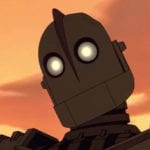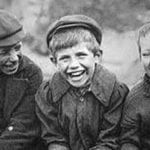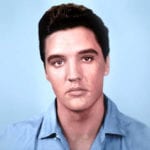 Weird Stuff
Weird Stuff  Weird Stuff
Weird Stuff  Politics
Politics 10 Political Scandals That Sent Crowds Into the Streets
 Weird Stuff
Weird Stuff Ten Bizarre Facts About The Doge Meme
 Our World
Our World 10 Ways Your Christmas Tree Is More Lit Than You Think
 Movies and TV
Movies and TV The 10 Coolest Stars to Set Sail on The Love Boat
 History
History 10 Things You Didn’t Know About the American National Anthem
 Technology
Technology Top 10 Everyday Tech Buzzwords That Hide a Darker Past
 Humans
Humans 10 Everyday Human Behaviors That Are Actually Survival Instincts
 Animals
Animals 10 Animals That Humiliated and Harmed Historical Leaders
 History
History 10 Most Influential Protests in Modern History
 Weird Stuff
Weird Stuff 10 Funny Ways That Researchers Overthink Christmas
 Politics
Politics 10 Political Scandals That Sent Crowds Into the Streets
 Weird Stuff
Weird Stuff Ten Bizarre Facts About The Doge Meme
Who's Behind Listverse?

Jamie Frater
Head Editor
Jamie founded Listverse due to an insatiable desire to share fascinating, obscure, and bizarre facts. He has been a guest speaker on numerous national radio and television stations and is a five time published author.
More About Us Our World
Our World 10 Ways Your Christmas Tree Is More Lit Than You Think
 Movies and TV
Movies and TV The 10 Coolest Stars to Set Sail on The Love Boat
 History
History 10 Things You Didn’t Know About the American National Anthem
 Technology
Technology Top 10 Everyday Tech Buzzwords That Hide a Darker Past
 Humans
Humans 10 Everyday Human Behaviors That Are Actually Survival Instincts
 Animals
Animals 10 Animals That Humiliated and Harmed Historical Leaders
 History
History 10 Most Influential Protests in Modern History
Top 10 Rockers Who Are Better Than Elvis
Right off, let me just say that this list is not intended as a slight to Elvis Presley. I was just having a little fun with the title to generate some interest and emotion, but I’m an Elvis fan and his impact, popularity and chart success cannot be denied. But, let’s face it, when is the last time you heard someone cover an Elvis song? The answer is “never”, because Elvis couldn’t write a song to save his life. In fact, he scored hits with songs written by some of the artists on this list. That’s not to say that penning your own song(s) is the only measure of talent, influence and respect. His defenders will argue that he was a great arranger, making others’ songs his own, not to mention he was a vastly charismatic performer who even influenced some on this list, to which I would agree. But for this list of rock and roll pioneers, I wanted to look beyond the obligatory recap of Elvis’ superstardom and, instead, feature ten other legendary rockabilly and rock artists from the 1950’s who had a major impact on the course of rock and roll history.
This era of American music had a huge influence on the UK’s burgeoning pop scene (Cliff Richard & the Shadows, and Vince Taylor & the Playboys were early imitators) that would soon explode upon the States, and the world, in a big way with the British Invasion of the early to mid 1960’s. Many of those acts, from The Beatles on down, idolized these guys, imitated their styles and covered their songs. I hope you enjoy and agree with my selections, and as always, please give your shout-outs in the comments to anyone I may have missed!
Known as the “Godfather of the Power-chord”, Fred Lincoln Wray Jr. single-handedly introduced fuzz and distortion to the masses, paving the way for the heavy, riff-laden metal onslaught yet to come. His 1958 instrumental, Rumble, is quite possibly one of the most badass songs ever. When released, it was actually banned in some radio markets due to its “violent imagery”, which is quite a feat considering there are no lyrics! Despite the lack of airplay, it jumped to number 16 on the pop charts, but, more importantly, it had a big influence on such future guitar gods and stars as Eric Clapton, Jimmy Page, Bob Dylan, Ray Davies, Jimi Hendrix, Jeff Beck, and Neil Young, not to mention both Lennon and McCartney. Pete Townsend has directly credited this song as being the reason he took up the guitar. Wray’s importance transcends whatever modest chart success he had after Rumble, but he did have a couple follow up hits like Raw-Hide, Comanche and Jack the Ripper, among other less noted but equally raucous tunes. In what I feel is a glaring omission, he is not yet a member of the Rock and Roll Hall of Fame, but he is rightfully enshrined in the Rockabilly Hall. I could not locate a good vintage clip of him performing Rumble live, and though more recent footage of him exists, I chose to feature the original studio recording here so as to better appreciate the song in its rightful period context.
Bonus trivia: The 2008 documentary film It Might Get Loud features a great candid segment with Jimmy Page in his home music room, spinning a vinyl side of Rumble on his turntable, playing “air guitar” to it, and beaming like a youngster gushing about his idol.
Just as Link Wray seemed to appeal more to fans of a delinquent nature, Duane Eddie was there for the more straight-laced and clean-cut suburban white male youths of the day. Eddy’s unique guitar-playing style of plucking and bending the low strings high up on the neck to form single-note melodies, enhanced with tremolo and echo effects, earned him the nickname “King of Twang”, and his influences can be heard in the work of many later artists, such as George Harrison, John Fogerty, and Bruce Springsteen, to name but a few. The Shadows’ 1960 instrumental British hit Apache would appear to be a direct descendant of Eddy’s twang. His distinctive sound was further emphasized with the frequent accompaniment of gritty saxophone work by the late great session man Steve Douglas and, later, Jim Horn. His 1958 debut album Have ‘Twangy’ Guitar – Will Travel, rode the charts for over a year, making him one of the first rock stars to have success in the LP market. This album bore five instrumental hit singles including his best-known song Rebel Rouser, and was also one of the first rock records to be released in stereo. Overall, Eddy charted fifteen Top 40 singles and has sold over 100 million records, making him the most successful rock instrumentalist ever.
Bonus trivia: In 1960, Duane Eddy was the first rock musician to have his own signature model guitar manufactured with his endorsement: the Guild Duane Eddy DE-400 and limited edition DE-500. During his heyday, Eddy actually played a ’57 Gretsch Chet Atkins model 6120 hollow-body, and in 1997 Gretsch produced a “DE” version of the 6120.
Say what you will about Jerry Lee Lewis’ lifestyle choices, but please note that my admiration for these guys is focused on their lasting contributions to rock history, and not necessarily their personal lives. I certainly don’t think it is “cool” that Lewis married his 13 year old cousin, Myra, when he was 23, nor did most fans of the day, as it sparked much controversy and pretty much stopped his career dead in its tracks. That said, in his prime, he truly was “The Killer”, as his frenzied and dynamic piano playing and rowdy vocal style lit up the stage. His strict religious upbringing was a source of conflict for him – his mother enrolled him in bible school but he was kicked out for boogying up a hymn – and he always considered his rock and roll calling to be devil’s music. He grew up listening to gospel music and begun playing piano at age 8.
Other early influences were country icons Jimmy Rodgers, Hank Williams and Moon Mullican. Lewis had a near encyclopedic knowledge of honky-tonk, western swing and hillbilly blues, and he blended these styles into his own distinctive sound. Signed by Sam Phillips to Sun Records, his first single was an up tempo cover of country star Ray Price’s Crazy Arms, in 1956, but he broke through in 1957 with Whole Lotta Shakin’ Going On hitting number 3 on the rock charts, and Great Balls of Fire hitting number 2 (both went to number 1 on the country charts). His career was soaring, but while on tour in England, the British press found out about his marriage to Myra and ate him alive. The tour was cancelled, and upon returning to the States, he found that his songs were banned from airplay and he was lucky to land paying gigs at small clubs and dives. It took him over a decade to land back on his feet, finally scoring some country hits for Smash Records and touring into the 2000’s. But the Killer’s rock and roll legacy will live on, and he is rightfully a member of both the Rock and Roll and Rockabilly Halls of Fame.
Richard Wayne Penniman, aka Little Richard, once said “boogie-woogie and rhythm & blues mixed, is rock and roll”. I’d say that’s a pretty accurate description, and Little Richard, boogied like a madman. Growing up poverty-stricken in the deep south, Penniman was one of twelve children in a close-knit religious and musical family that often performed in local churches. Gospel artists of the 30s and 40s, and early jump blues styles, heavily influenced him, as well as little-known Eskew Reader Jr. (aka Equerita), whose style some might say that Penniman flat out copied. No matter; his outrageously flamboyant personality, explosive vocals, and hard-driving piano definitely kicked out the jams. He cranked out a string of, now-classic hits, that flooded the charts in 1956-57, notably Long Tall Sally, Rip It Up and Lucille, all of which hit number one on the R&B charts.
Numerous other hits placed in the top ten, including, probably his best-known song, Tutti Frutti. He also performed the title track for the 1956 cult-classic rock & roll film, The Girl Can’t Help It. James Brown and Otis Redding are among those who cite being directly influenced by Little Richard, as do rock luminaries such as Bob Dylan, Mick Jagger, John and Tom Fogerty and The Beatles, who covered a number of his tunes in their early days. Paul McCartney has said that as a young fan, he’d always wanted to sing like Little Richard.
In late 1957, at the height of his popularity, Little Richard abruptly quit rock and roll to record gospel music, and enrolled in Bible college to become an evangelist minister. He did come back to rock and roll off and on throughout the years, enjoying sustained popularity, but he never matched his earlier chart success. Nonetheless, Little Richard is a key figure in early rock and roll, and was among the first group of performers inducted into the Rock and Roll Hall of Fame.
Nearly everyone is familiar with the story of the tragic plane crash on February 3, 1959, that took the life of the beloved Buddy Holly, along with fellow musicians Ritchie Valens, JP Richardson (aka The Big Bopper) and pilot Roger Peterson, as they were traveling between gigs of a winter concert tour. But, in a career spanning all of about 18 months, Buddy Holly left a lasting legacy of rock classics and was a major influence on virtually every aspiring early rock and roller. Born and raised in Lubbock, Texas, to a musical family, Charles Hardin Holley (later changed to Holly) at an early age took up the guitar, fiddle and piano, and sang in the church and school choirs.
As a teenager, he formed the Buddy & Bob Western and Bop band with some high-school friends, performing locally and was featured regularly on a local radio station program. The station also promoted country and rockabilly shows in the area, often tapping the Western and Bop band as opening act. One of these shows featured a young Elvis Presley, which prompted Holly to drift away from a country sound and into rock and roll. Signed to Decca subsidiary Brunswick Records with his new band the Crickets, his 1957 single That’ll Be the Day shot to number one. More hits followed, including many posthumous releases. He was an innovator in the studio, utilizing double-tracking techniques and also dabbling with orchestration. Holly (like Elvis) helped bridge the gap between American black and white audiences. He was one of the first (possibly the first, sources vary) white performers at Harlem’s historic Apollo Theater, and eventually won over the crowd. Lennon and McCartney have cited Holly as a major influence, and the lads from Liverpool are said to have come up with their idea for their Beatles name as a derivative of the Crickets. A cover of Holly’s Not Fade Away was the Rolling Stones’ first U.S. single, and numerous other bands perform it regularly.
Bonus trivia: Don McLean’s 1971 hit America Pie features a lyrical hook “the day the music died”, which is a reference to the tragedy that took the lives of Holly, Valens, and Richardson on that fateful day. He is notoriously reluctant to discuss the meaning behind this song’s interesting lyrics, but has acknowledged that Holly’s death was an event in his own young life that affected him deeply.
Born Vincent Eugene Craddock, Gene Vincent’s legacy will always be defined by one monumental song, 1956’s Be-Bop-A-Lula, which is considered one of the most iconic songs in rockabilly history. But, if not for Vincent’s serious motorcycle accident in 1955 just before embarking on a six-year military stint, we would’ve been deprived of this classic tune. It was while recuperating in a US Navy hospital that Vincent, a guitar player since his teens, met fellow patient Donald Graves, who co-wrote the song with him. Vincent ended up buying the rights to the song from Graves for less than $50. With his military career over as a result of the injury (his leg was severely damaged, barely saved from amputation, and left him with a permanent limp and chronic pain), Vincent threw himself into music, playing country tunes for a local radio station in his home town of Norfolk Virginia. Station host Tex Davis became his manager and put together a back-up band, calling the unit Gene Vincent and His Blue Caps. A demo was sent to Capitol Records, which led to his signing and a four song recording session, which produced the single Woman Love with Be-Bop-A-Lula on the B-side. After radio jocks deemed the Woman Love as being “too suggestive”, they started playing the flip-side, which ended up occupying the pop charts for 20 weeks, rising as high as #7. Vincent and His Blue Caps also had a scene-stealing performance of this song in the previously mentioned film The Girl Can’t Help It.
As an aside, one can’t talk about the Blue Caps without mentioning the brilliant Cliff Gallup on lead guitar. His stint with the band was short; he played on about 35 songs in the early Blue Caps catalogue, but that was enough to establish him as one of the best guitarists of early rock and roll. Jeff Beck in particular, cites Gallup as a major influence, and in 1993 he released an album of Vincent covers as a tribute to Gallup. Unfortunately I could not find any live Blue Caps clips featuring Gallup, so this nice one of Be-Bop-A-Lula, circa 1958, will have to do. Here we see his replacement, the not too shabby Johnny Meeks on guitar, himself a member of the Rockabilly HoF, but he’s no Gallup. Give a listen to the studio version of this song for a comparison, but if you are a guitar fan or aficionado, I urge you to do yourself a favor and look up some of the other early Blue Caps recordings as well. Race With the Devil, Who Slapped John and Bluejean Bop are good ones, but I recommend 1956’s Cruisin’ if you want to hear a fabulous example of Gallup’s lightning fast runs. It holds up even today, but for the period, he is just incredible.
Vincent entered the Rock Hall of Fame in 1998, and was the Rockabilly Hall’s inaugural entry (certificate number 0001), presented in 1997. Unfortunately, Vincent’s later years were plagued by chronic pain and alcoholism, and he died of a stomach ulcer in 1971 at the age of 36.
Bonus trivia: George Harrison’s “Rocky”, the famously hand-painted psychedelic Stratocaster from Magical Mystery Tour, includes the word “Bebopalula” in the artwork, as an homage to Vincent. You can see a picture George playing it here.
Influenced by guitar-picking greats such as Joe Maphis and Chet Atkins, Eddie Cochran’s recording career started in country music, teaming with singer Hank Cochran (no relation) as The Cochran Brothers. As the story goes, after seeing Elvis perform in a 1956 concert, Eddie switched to a more rocking style, and The Cochran Brothers soon split, as Eddie’s rockabilly preferences became his true calling. His breakthrough came in 1956, when he performed the song 20 Flight Rock in the film, The Girl Can’t Help It, ironically in a plot-driving scene mocking how a “guy with an untrained voice can become one of the top record stars in the country”.
Cochran penned several hits, his biggest being Summertime Blues, later to be memorably covered by Blue Cheer and the Who. His use of overdubbing techniques in the studio on songs like Summertime Blues, as well as C’Mon Everybody, was innovative at the time. Unfortunately, his career was cut short when, in 1960, at the age of 21, he was killed in a traffic accident while on tour in the UK with friend Gene Vincent. Also in the car with Cochran was Eddie’s girlfriend, Sharon Sheeley, who was unharmed, and Vincent, who suffered a broken leg (same leg as the one already damaged from his earlier motorcycle crash) and other injuries. Like Buddy Holly, Eddie Cochran’s untimely death at such a young age has led to an immortal iconic status, and he is enshrined in both the Rock and Roll and the Rockabilly Halls of Fame.
Bonus trivia: Cochran’s 20 Flight Rock was a favorite song of a young Paul McCartney, and upon meeting John Lennon in 1957, he so impressed John by teaching him the chords and knowing all the words by heart, that John asked Paul to join his skiffle group, The Quarrymen.
Ellas Otha Bates was born in McComb, Mississippi, in 1928, and as a youngster was adopted and raised by his mother’s cousin, which resulted into a name-change to Ellas McDaniel. Stories vary as to how he acquired the nickname Bo Diddley, and Bo himself doesn’t seem to remember. Initially classically trained as a violinist, Bo changed course after seeing a performance by bluesman John Lee Hooker. Also known as “The Originator”, due to his role in the merging evolution of the blues into rock and roll, Bo’s signature style employed a pounding beat, “like playing drum licks on a guitar” he once said. He made extensive use of reverb, tremolo and distortion, which was innovative at the time. Bo designed his own guitars, and from about 1959 onward, he was seldom, if ever, seen without his trademark “cigar-box” bodied custom Gretsch that he affectionately named “Big B”. He later commissioned an Australian guitar builder for a replacement square-bodied unit he dubbed “The Mean Machine”. Bo is also recognized as being one of the first male rock artists to include female musicians in his band, most notably The Duchess (Norma-Jean Wofford), and later Lady Bo (Peggy Jones).
His first single was in 1955, with the double A-side release of his eponymous song Bo Diddley, flipped with I’m a Man, both of which hit number one on the R&B charts, although most people are probably more familiar with the Yardbirds’ exceptional cover of I’m a Man released ten years later. Many more songs followed, and while there were no more huge hits, classics such as Roadrunner and Who Do You Love have become rock and roll standards. Bo’s influence spans many well-known bands and musicians, notably the Stones, the Who, the Animals, Clapton, Hendrix, Billy Gibbons, George Thorogood and even AC/DC. Bo Diddley is a member of both the Rock and Roll and the Rockabilly Halls of Fame. He died peacefully at home on June 2, 2008 at the age of 79.
Bonus trivia: When Bo and his band appeared on The Ed Sullivan Show in 1955, Sullivan wanted them to play the Tennessee Ernie Ford song, Sixteen Tons, but instead they played Bo Diddley. This infuriated Sullivan, who, according to Bo, called him “the first colored boy to ever double-cross him” and declared that he “wouldn’t last six months”. The defiant smirk from Bo towards an off-camera Sullivan just before he starts playing is priceless.
Carl Lee Perkins grew up dirt poor on a cotton plantation near the small town of Tiptonville, Tennessee, and as a young boy toiling alongside black field workers, was exposed to southern gospel music, learning to play guitar from an elderly field hand. By the time he was a teenager in the 40’s, he’d formed a band with his two brothers. The Perkins Brothers Band soon became one of the more popular acts on the local honky-tonk bar circuit. A big Bill Monroe fan, upon hearing Elvis on the radio covering one of his songs, he was inspired to travel to Sun Records, in Memphis, to audition for Sam Phillips. There, he cut a single, a country song written when he was 14, called Movie Magg, which had minimal impact. About this time, Elvis left Sun for RCA and Phillips encouraged Perkins to pursue a more rocking style, which resulted in his recording his now classic song, Blue Suede Shoes. It was 1956 and this tune put Perkins on the map, as it shot to number one on the country chart, and number 2 on the pop and R&B charts, and became Sun’s first million selling record. Perkins and his band were ready to capitalize on this national attention, with gigs lined up on the Ed Sullivan and Perry Como television shows, but on the way to New York for the appearances, they were involved in a serious traffic accident when the driver of the car they were all riding in fell asleep at the wheel. The driver was killed, and Perkins suffered a cracked skull and broken arm. His brother Jay’s neck was broken, and though he was not paralyzed, he never fully recovered.
In the 1957 clip I’ve chosen here, you can see Jay back on stage playing 2nd guitar, but still in a neck brace, and he would die from complications of the injury just a year later. If this misfortune was not bad enough for the Perkins Brothers, only months after the accident, while still hospitalized recovering, they saw Elvis record his own version of Blue Suede Shoes, and perform it on the Dorsey Brothers television show. The song became Elvis’ third and biggest hit to date, charting to number 20, and Perkins’ momentum was stopped cold. He resumed writing and recording at Sun, however, releasing several more, now classic, rockabilly songs, and touring throughout the sixties and later as a member of Johnny Cash’s band, even writing a hit for him. Though Perkins never again achieved the same level of chart success as he did on that first million seller, his place in music history is rock solid.
Bonus trivia: All four Beatles were huge fans of Perkins, and they recorded more covers of his songs than any other artist. George, in particular, cites Perkins’ style as a major influence, and Paul once said, “If there were no Carl Perkins, there would be no Beatles”. Perkins’ Honey Don’t would later became an oft-played Ringo vocal vehicle for them, and the lads had even requested Carl’s presence at their 1964 recording session for this tune, which led to a long friendship between them.
In my estimation, Chuck Berry is the most influential rock musician of all time. It was Berry’s own hero, Muddy Waters, who convinced Berry to approach Leonard Chess of Chess Records for an audition, which led to his recording of Maybellene, in 1955. That song hit number 1 on the Billboard R&B charts, selling over a million copies, and he was on his way. His extensive discography includes such classics as Roll Over Beethoven, Too Much Monkey Business, Rock and Roll Music, Carol, Sweet Little Sixteen, Little Queenie and, of course, the standard by which all other rock and roll songs are measured: Johnny B. Goode. So many notable performers have covered Berry’s work over the years that I won’t even try to list them all. Ted Nugent once quipped: “If you don’t know every Chuck Berry lick, you can’t play rock guitar”. Check out this clip of Roll Over Beethoven and you can see where the likes of Pete Townsend and Angus Young got some of their stage moves, as Berry’s showmanship and guitar solo posturing were the prototype for future generations of rockers. As with many others on this list, his following was big overseas, helping shape many soon-to-be British Invasion acts.
The Rolling Stones were huge fans, and, in particular, Keith Richards cites Berry as a primary influence. The Stones’ covered a Berry tune on each of their first several albums, and their very first single was a rendition of Berry’s Come On. The Beatles also covered him extensively, and the Yardbirds and Animals also had success with Berry-penned tunes. Unfortunately, Berry’s career hit some rough patches later on over some rather sordid personal affairs, but as I mentioned in an earlier entry, I’m just focused on their music, and their contributions to rock and roll history. And so, in that regard, it is my opinion that Chuck Berry tops the list by a wide margin.
Bonus trivia: The Beach Boys 1963 hit, Surfin USA, is a blatant rip-off of Berry’s Sweet Little Sixteen, with a nearly identical melody and “city by city” lyrical theme (not to mention lifting the opening riff from Duane Eddy’s Movin’ n Groovin’). When originally released by the Beach Boys, Brian Wilson was listed as the sole composer, however, after being threatened by a lawsuit, Berry was granted sole writing credits and royalties to Surfin USA.
Once again I have found myself in a predicament where I really wanted to include a particular performer but couldn’t decide who to bump out of the top 10 to make room. So, instead of waffling forever about it, I am including New Orleans’ own Antoine “Fats” Domino here as a bonus entry. Obviously not as wild or flamboyant as the other boogying pianists on this list, it is perhaps his down-to-earth nature and unassuming personality that made him such an enduring figure to music fans. His first single, 1949’s The Fat Man, is considered by many to be the first ever “rock and roll” record, and, in a career that amassed sales of over 65 million records and no less than thirty-seven Top 40 singles (eleven in the top 10, and nine R&B number 1’s), he’s had more hits than every other ‘50’s rock legend except for Elvis. He was an important figure in the transition of rhythm and blues to rock and roll, as exemplified by his first crossover top 10 pop hit in 1956’s Ain’t That a Shame. Among his other notable hits are Blue Monday, I’m Walkin’, I’m in Love Again, and, of course, his unforgettable rendition of Blueberry Hill. Besides his own records, Domino can also be heard sessioning for such notables as Big Joe Turner and Lloyd Price.
He has inspired and influenced many future rock pianists, including Paul McCartney, Billy Joel and Elton John. Among the first class of Rock and Roll Hall of Fame inductees, Billy Joel spoke on Domino’s behalf and thanked Domino for “proving the piano was a rock and roll instrument”. Though initially thought to have perished in the floods of Hurricane Katrina in 2005, Domino is still alive and well, living in his beloved New Orleans home, rebuilt in part with proceeds from the sale of a charity album Goin’ Home: A Tribute to Fats Domino, which featured covers by many notable performers.
Bonus trivia: According to Bob Spitz’s 2005 book, The Beatles: The Biography, the first song that John Lennon learned to play on his guitar was Fats’ Ain’t That a Shame, taught to him and a friend by John’s mother during the formative stages of what would become the Quarrymen. Years later, the Beatles’ Lady Madonna was a tribute of sorts to Domino’s style, and Domino himself covered it in 1968, which was his last charting single.








